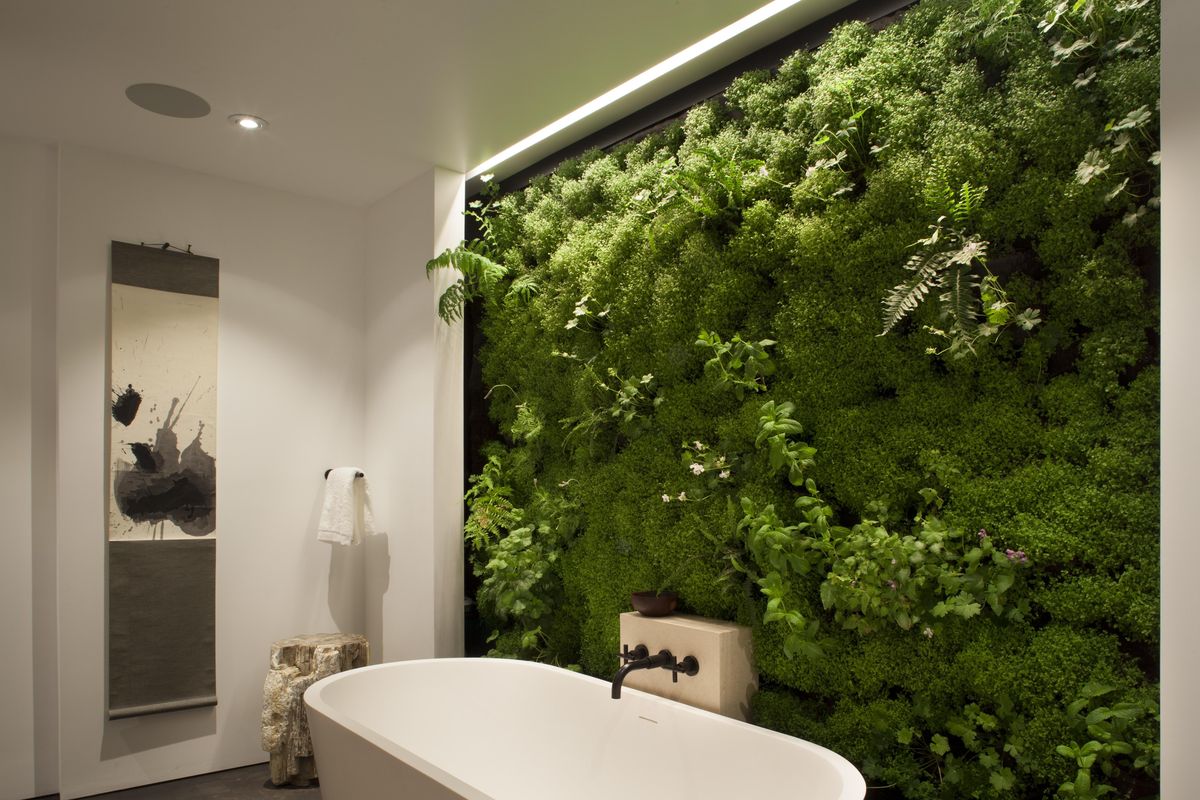Indoor plant displays: built-ins, wall pockets and more

Imagine stepping into a bathtub, and instead of bathroom tiles lining the wall next to you, there’s a fresh vertical garden, lush with bright green ferns, lavender, baby’s tears, mint and other fragrant plants.
San Francisco-based design studio Siol created just that a few years ago for one home.
Unusual ways to display indoor plants run the gamut, from built-in shelves and containers in and along walls, countertops or tables, to wall pockets and terrariums.
“Decorating with plants is still one of the easiest ways to make a home feel lived in and relaxed,” said James Augustus Baggett, editor of Country Gardens magazine. “There are so many different ways that people can incorporate plants into a home’s design.”
For that living green bathroom wall, grow lights and a self-circulating drip water system were built into the 10-by-10-foot wall to promote indoor growth, said Siol co-owner and principal Jessica Weigley, 38. Lavender plants added a spa-like dash of aromatic beauty.
“We were joking that you could pick the lavender and put it into the bath with you,” Weigley said. “Bringing nature indoors is huge. It still requires care and attention, like any other garden. It’s just on your wall.”
Of course, a full green wall is also incredibly pricy – it can cost customers at least $10,000, at about $100 to $200 per square foot, Weigley said, because of its embedded lighting and watering system.
A much cheaper indoor-garden alternative is pockets made of various materials – including ceramic, glass, plastic, wood, metal and even macrame – that can hang directly on a wall and be filled with plants, said Baggett. They can run about $20 to $100 each.
Easy-to-care-for indoor plants include snake plants – also known as sansevierias – with long, pointy green leaves that reach upward; dark green, cast iron plants; wall-crawling ivy; dangling spider plants; succulents, and foxtail ferns. Snake plants and cast iron plants, especially, require little light and watering. Bonsai trees, bay laurel trees and small fig trees can also be displayed indoors in both planters and partitioned floor areas padded with soil and rocks.
Those living in smaller homes can get creative: “Vertical gardening is the hottest trend for not a lot of space,” said Baggett. “There’s the floating shelf – a shelf that’s just sticking out of the wall – and the half wall, a waist-high wall, with plants on top of it. Recessed wall niches are also popular.”
Miniature gardens, from terrariums – landscapes in glass containers – to fairy gardens, have caught on for both space-conscious adults and fun-loving kids, he said.
What are fairy gardens? They’re small, whimsical sceneries decorated with itsy-bitsy figurines, houses, moss, milkweed pods, pine cones and tiny plants.
Kokedama, a Japanese plant art that means “moss ball” in English, involves forming a moss-covered ball of soil around the roots of a plant and wrapping it with twine. Suspending these moss balls as hanging plants is also a trend, Baggett added.
Those with a retro aesthetic can display succulents and cacti in vintage tins and decorative pottery. Molded fiberglass bullet planters, popular in the 1950s, have also been making a comeback. The size of an ice bucket, the planter is held aloft on a three-pronged stand.
“Plant stands are handy. You’re raising those plants to eye level,” said Baggett. “That pulls your eye around that room. It’s the same way in an outdoor garden that people use color to pull the eye around the garden.”